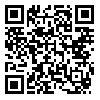گروه آموزشي روانشناسی، واحد زرند دانشگاه آزاد اسلامی ،کرمان ، ایران , hamid.molayi@gmail.com
Abstract: (821 Views)
The purpose of this research is to design a model of marital cohesion based on attachment styles, differentiation in couples referring to family counseling clinics in Kerman city in 1402. The current research was a type of correlational design based on the structural equation modeling method. The statistical population was all those who referred to the family counseling clinics of Kerman city in the first 6 months (spring and summer) of 1402. To calculate the sample size, the research literature related to the SEM statistical method was referred to. Taking into account the theory of Tapachnik and Fidel (2007), the sample size was 386 people who met the conditions for entering the analysis, which were selected from eight psychological clinics in Kerman city by random cluster sampling. The research tools were Escoron's Differentiation Questionnaire (2000), Graham Spanier's Marital Cohesion Scale (1976), Hazen and Shaver's Adult Attachment Questionnaire (1987). In order to analyze the data in inferential statistics, the study of the hypotheses of the data research using structural equation method and using AMOS software was used, and the results show a significant relationship between secure attachment styles and marital cohesion. Due to the positivity of the path coefficients, these relationships are incremental (direct). Also, there was a significant and decreasing (inverse) relationship between insecure attachment styles with marital cohesion, ambivalent attachment styles with marital cohesion and differentiation with marital cohesion.
Type of Study: Research |
Subject:
Clinical Psychiatry
Send email to the article author






